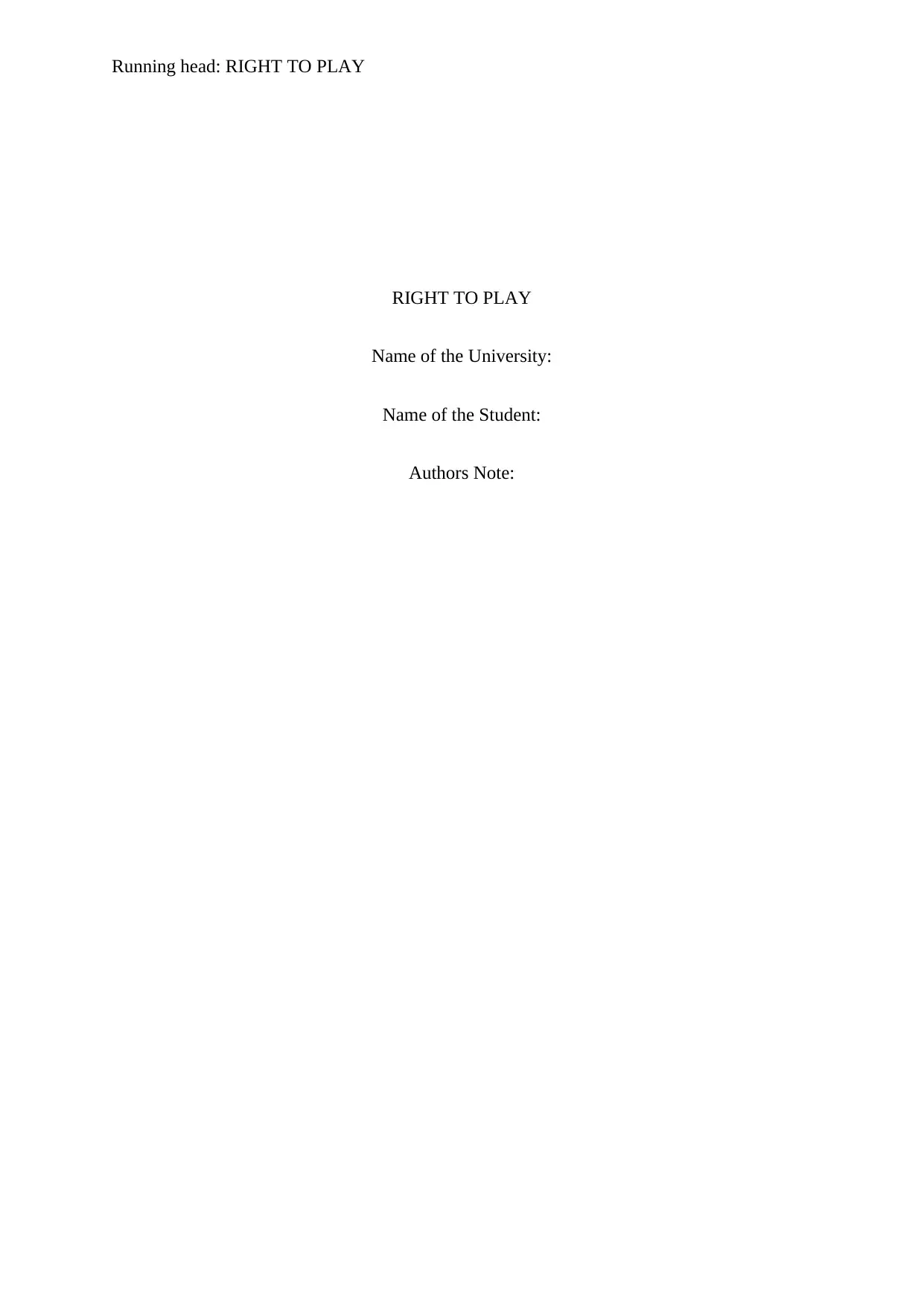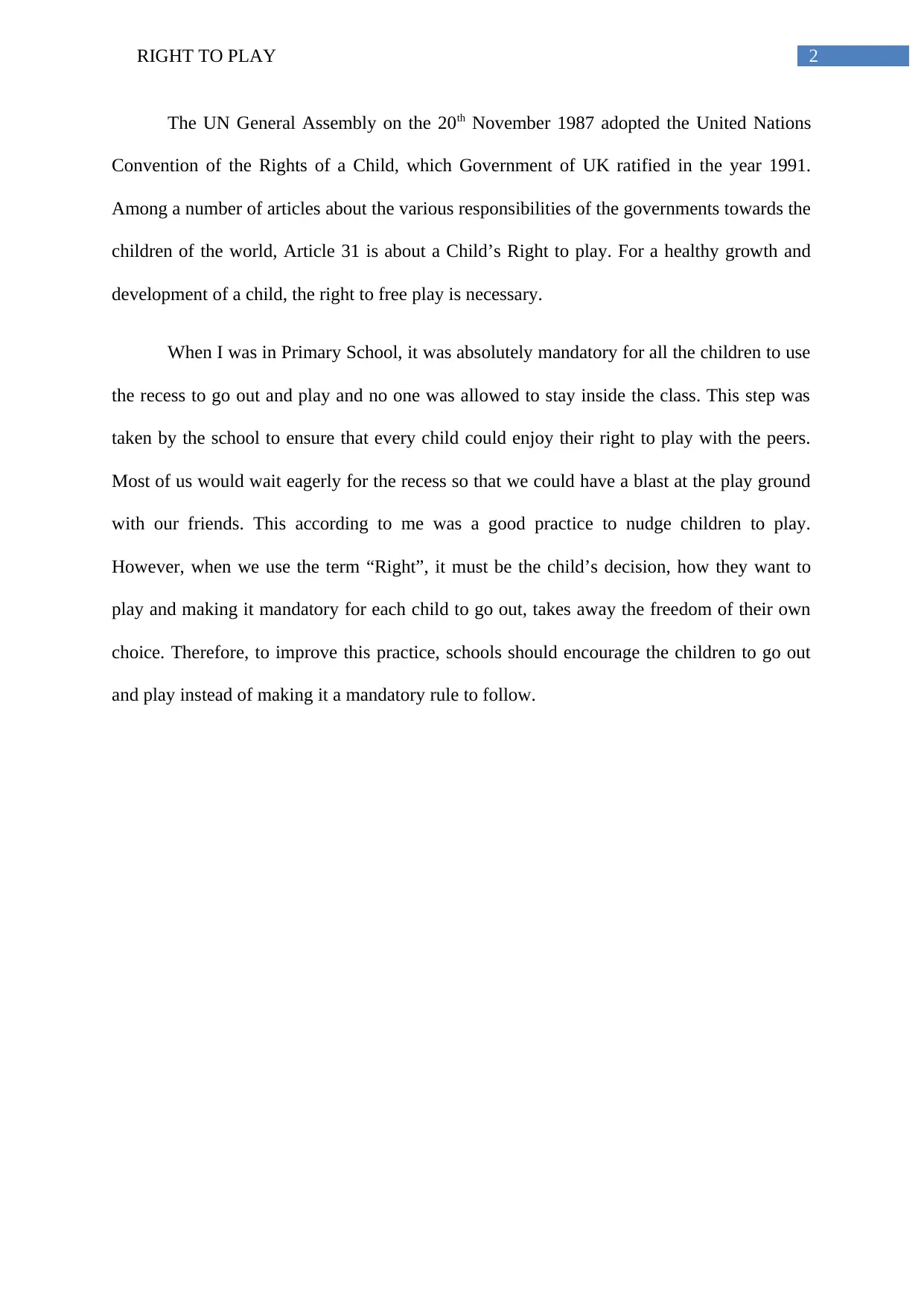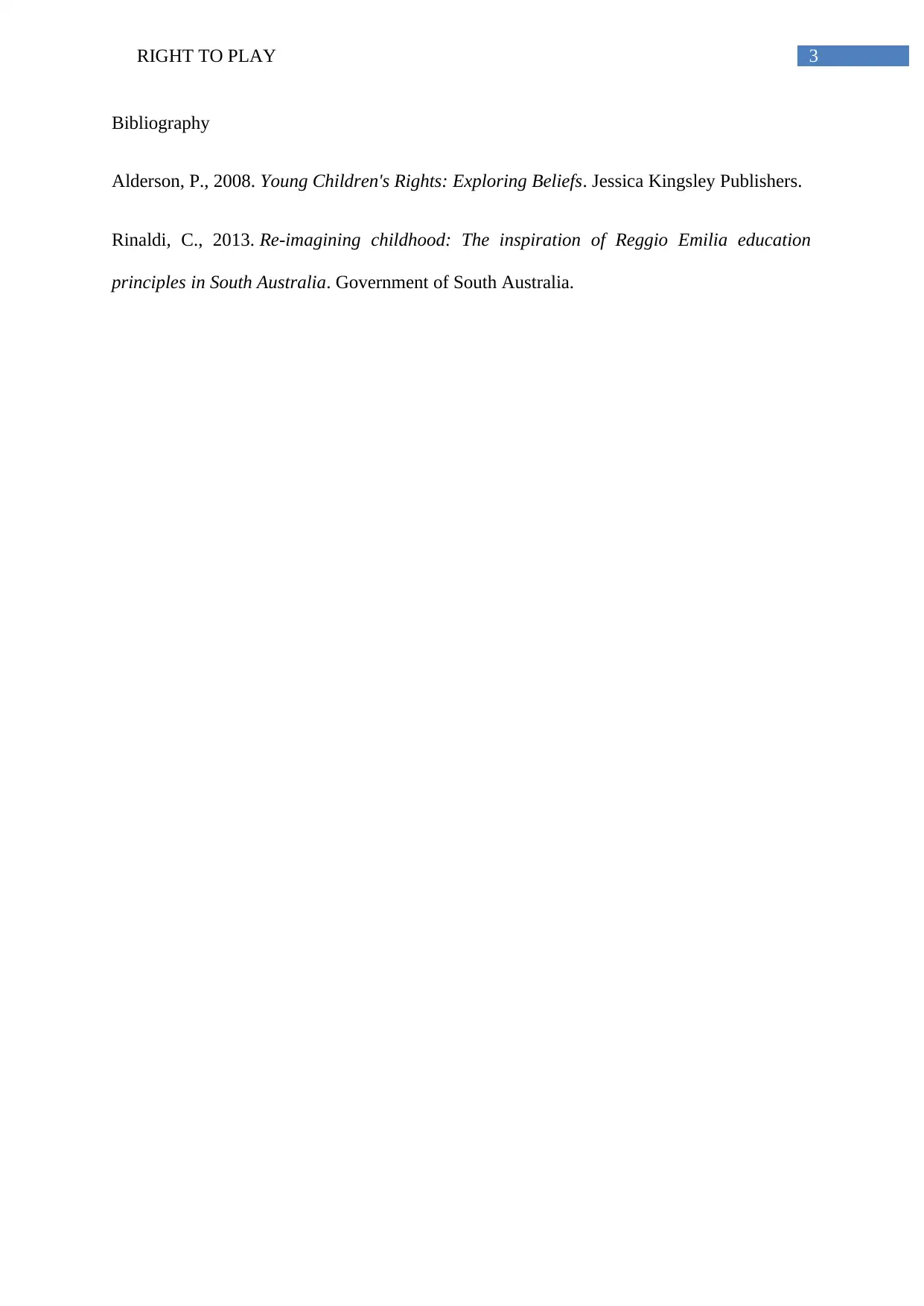Right to Play: Analyzing the Importance of Play in Childhood
VerifiedAdded on 2021/04/24
|3
|317
|35
Essay
AI Summary
This essay delves into the significance of the right to play, as outlined in the United Nations Convention on the Rights of the Child, specifically Article 31. It examines the importance of play for healthy child development and growth. The author shares personal experiences from their primary school years, highlighting the mandatory recess and its impact. The essay explores the balance between encouraging play and respecting children's choices, advocating for schools to foster play rather than enforce it. The essay also references key literature, including works by Alderson (2008) and Rinaldi (2013), to support its arguments about the role of play in childhood. The essay provides a thoughtful analysis of the importance of play in child development and wellbeing.
1 out of 3










![[object Object]](/_next/static/media/star-bottom.7253800d.svg)